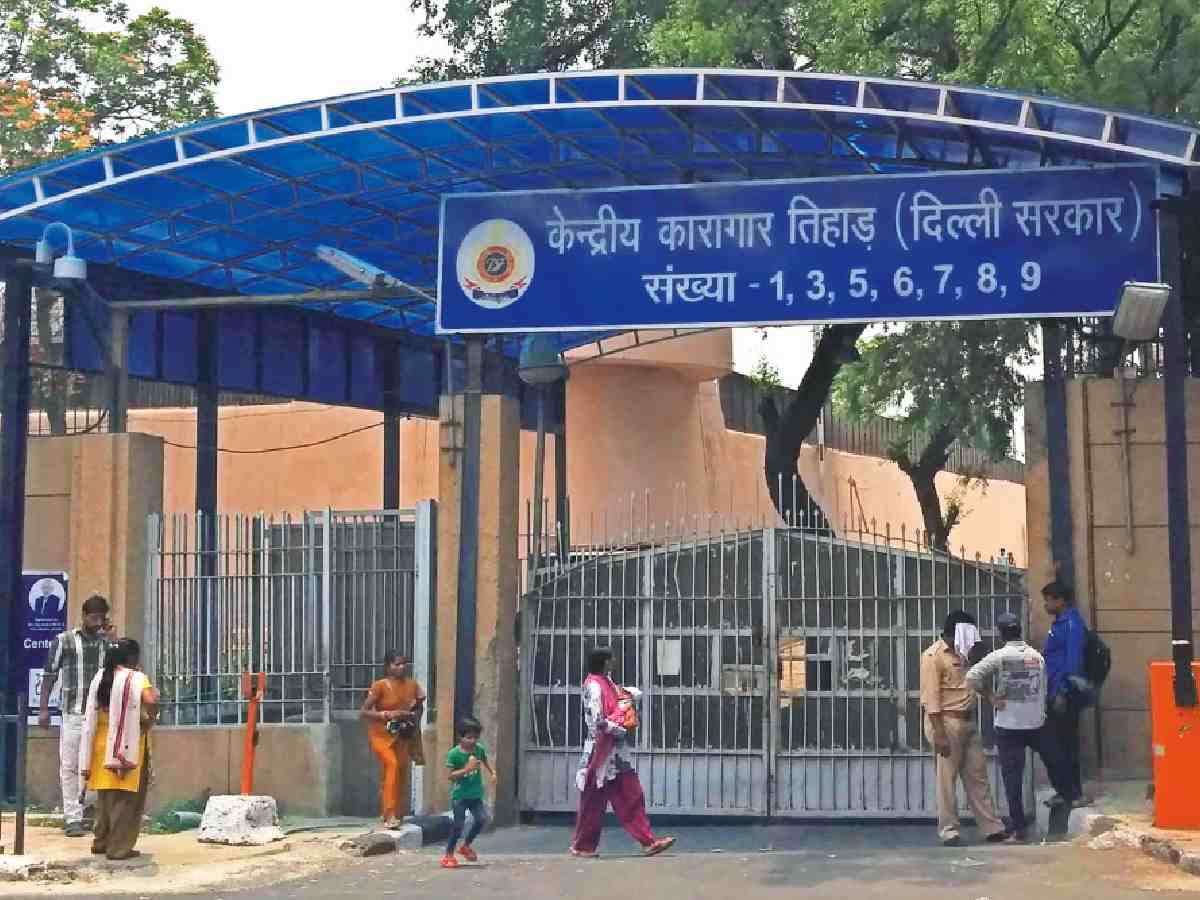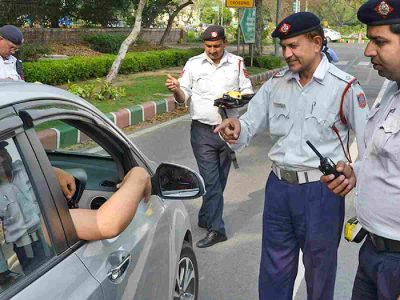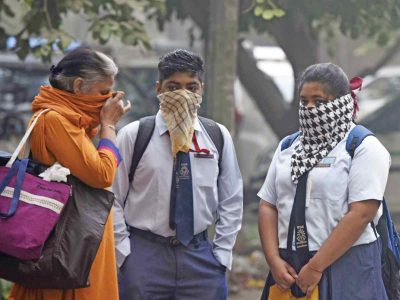Delhi Jails: Savitri (name changed), 42, from Delhi’s Mangolpuri, is on trial for allegedly murdering her husband and is currently out on bail from Tihar Jail. Employed at a car spare parts market, she earns Rs 7,000 a month to support herself and her daughter, who was just nine months old when Savitri was incarcerated in 2018. With no external support, she kept her baby with her in jail. “The basic facilities in Tihar Jail are adequate, but better food should be provided for children,” Savitri told Patriot.
Not just her, but many mothers choose to keep their children alongside them within the prison compound. According to sources in the prison department, as of June 19, there were 28 children living with their mothers inside Delhi’s jails—19 in Tihar and nine in Mandoli.
Deepali (name changed), 34, a ration shop worker from Old Delhi, has been out on parole for some time after serving five years in Tihar’s Jail Number 6. Her daughter, who now lives at a missionary school in Noida, Uttar Pradesh, visits only once a month. “The scenario was a bit difficult bringing her up when she was born in jail. I am glad that the department decided to have her brought up outside,” she said.
Their experiences reflect those of many of India’s 1,537 women inmates, and their 1,764 children who were living in jail in 2022, as per National Crime Records Bureau (NCRB) data. Women make up just 4% of India’s prison population.
Also Read: Private schools misused funds, violated norms: DoE audit reports
Children in a male-centric system
Mothers in jail often struggle to secure suitable food and care for their children, who may remain with them until the age of six if no alternative is available. While Delhi’s Tihar Jail—described as a ‘model’ prison—has a dedicated women’s facility, most female inmates in India are housed in separate enclosures within male-dominated prisons. Experts told Patriot that prisons are primarily designed “from the perspective of managing male prisoners’ issues.”
Consequently, children rarely access quality education or social interaction due to the confined setting. After turning six, they are separated from their mothers and placed in state-run institutions until their mother is released or they can become self-reliant.
A 2006 Supreme Court ruling mandated weekly visits for children to meet their mothers, but this is rarely implemented. The Home Ministry’s Model Prison Manual (MPM 2016) and the United Nations’ Bangkok Rules (2011) also outline welfare procedures for women inmates with children. Experts acknowledge these frameworks have had a “positive impact”, but a “gap between policy and implementation” remains.
Globally, about 19,000 children live with their primary caregivers—typically mothers—in prisons, according to the 2020 Global Prison Trends report by Penal Reform International.
The 2018 Women in Prisons report by the Ministry of Women and Child Development (WCD) noted that implementation of welfare provisions is “largely lacking” and stressed that children should not feel like offenders.
Low numbers of women prisoners make separate infrastructure economically unviable, said a social activist on condition of anonymity. “The same applies to children in jails due to their small numbers,” he said.
Nutritional shortfalls
The 2006 Supreme Court guidelines mandate pre- and post-natal care and appropriate diets for women inmates and their children. The MPM 2016 outlines dietary norms for pregnant and lactating mothers, infants, and children aged three to six.
Yet Savitri said, “There’s no special diet for children at dinner; we feed them the same food served to us.”
While in Tihar, her daughter attended a daytime crèche (7:30 am to 4:30 pm) for children over six months, while Savitri worked. Infants stayed with their mothers during tasks. These crèches allow children to experience a more normal routine, away from the confinement of the barracks.
Tihar provided fixed breakfast portions, and unlimited lunch and dinner servings (though only one helping per meal). Infants were given milk twice daily, but older children at the crèche were not. Extra milk was granted only on special request if a mother was not lactating adequately. “I sometimes had to beg for half a glass of milk at night for my daughter,” Savitri recalled.
Anu Narula, an advocate associated with female inmates at Tihar, said the crèche conditions were often in stark contrast with the rest of the prison. “The conditions at the crèche are great. The issue is that the children always had to return to the deplorable and brooding atmosphere of the women’s barracks. This is what the mothers had told me,” she said.
Monica Dhawan, director of India Vision Foundation (IVF), an NGO running crèches in seven jails, added, “The prison manual sets procedures, but there’s a gap in implementation.”
Educational gaps
MPM 2016 mandates crèches for children of women prisoners, compulsory daily education for at least one hour, and recreational programmes. However, children raised in jails often develop poor social skills due to limited exposure. “They are often only exposed to female inmates,” Dhawan explained.
Lives of jail babies
Bharti, now 18, was born in Tihar Jail. She remembers little about the prison, but one detail lingers. “It has been quite some time since I came out of Tihar. I do not remember much, except for the times when we would return from the open spaces of the crèche to the barracks. It felt overpowering—almost like the heft of the world was on your shoulders,” she said.
Reema Jain, 23, now lives with relatives. She recalled her uncle and aunt being thrilled to welcome her home. “I have not met my mother ever since. I get the jitters whenever anybody mentions Tihar, and honestly, due to the amount of darkness I endured there, I would not want to return,” she said.
Limited family contact
Older children are placed in state-run institutions until the age of 18, often separating siblings, according to a 2018 report by Prayas. Some children face financial hardship or lose contact with their mothers altogether.
State institutions, which are typically understaffed, rarely facilitate the weekly visits mandated by law, said a social activist.
“If relatives do not accept a child for whatever reason, then we connect them with an NGO to take care of them. Most of the children are sent off to the Nirmal Chhaya Complex in West Delhi,” said Arvind Kumar, Superintendent of Tihar Police.
Probation officers are responsible for arranging the visits, but compliance is poor. Savitri said she saw her daughter only once every three months, and that too through arrangements made by the NGO.
Also read: Rain in Delhi: 5 songs to remind you of a Delhi monsoon
Stigma and lack of support
Many women inmates are undertrials or convicted in spousal murder or dowry-related cases. The stigma surrounding women in jail leads to isolation and emotional distress. “My family visited once, bringing items for my daughter, due to the stigma of a woman in jail,” Deepali said. “Men are accepted post-release, but not women.”
Savitri’s in-laws care for her teenage sons, but disputes prevent her from seeing them. Experts say paternal families sometimes turn children against their mothers.
Solutions ahead
Experts noted that implementation of policies varies between states. As prisons are a state subject, some suggested establishing combined facilities per district for women inmates, Nari Niketans, and rescue homes, sharing vocational training and counselling services.
Dhawan called for sole responsibility to rest with prison administrations, supported by sufficient staff and funding. Savitri, now out on bail, proposed allowing inmates to buy additional food for their children from within jail, as many women earn wages inside.
Child psychologist Aruna Agarwal warned of the psychological consequences. “It all depends on how strong the mother is emotionally. If she is dealing with trauma, it will affect the child too. For example, she may not be emotionally present for the child, which may cause long-term issues,” Agarwal said.
Other psychologists also emphasised the need for consistent counselling and therapy sessions, both for mothers and their children.





